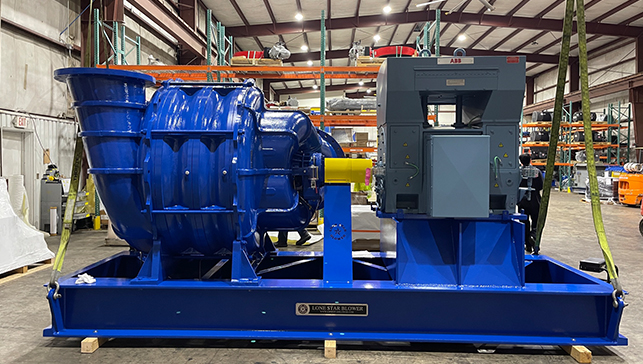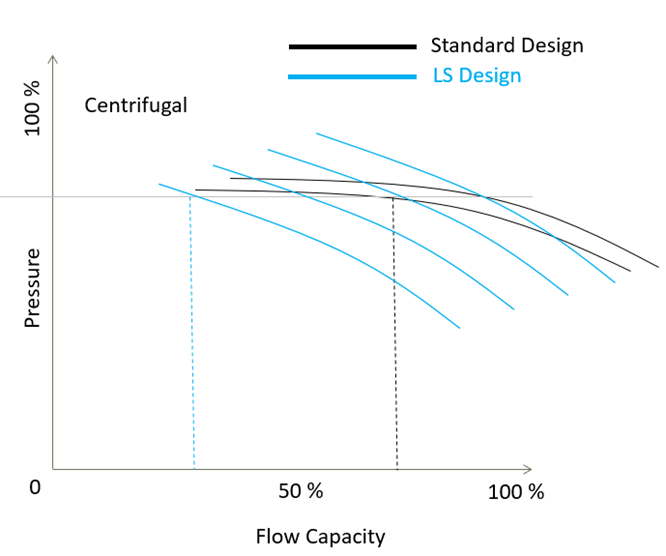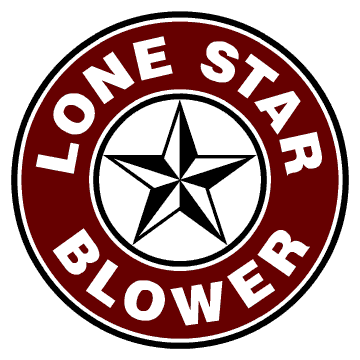
A Reliable Dinosaur: Multistage Centrifugal Blowers
March 2, 2021
James Cook – Lone Star
Multistage Centrifugal blowers have been around for close to 140 years and have a proven track record of being cost effective and reliable. While most people consider the multistage centrifugal technology as old and outdated, Lone Star has revived this dinosaur of a technology.
Dating back to the 1880’s, the multistage blower has been the workhorse for many compressed process air applications including vacuum and exhauster setups. The robustness to handle air and process gas, harsh environmental conditions, and the ease of operation and maintenance are why this technology is still being implemented by many sites and facilities today.
While most competitor’s design has not changed much over the past 100 years, Lone Star strived to improve this technology. As an OEM, we were able to have our engineers go back to the drawing board to find a solution to improve performance, bearing life and operate at higher pressures than what the competition offers. Efficiency is very important for blower applications, and our goal was to manufacture a design that can be installed with various VFD applications.
These improvements started with the impeller design. Our ability to design a new impeller opened many new doors with the performance range of the LS product line. By using the latest design software, we can achieve pressures up to 25 psi(g), which resulted in 40% more pressure capacity than our competition. The new design also offered a high rise to surge, which returned greater turndown capabilities and stability at lower flows.
The existing rule of thumb for a multistage turbo blower is to have 0.5 PSI rise to surge for a standard application in constant speed installations. With the price of VFD’s dramatically decreasing over the past 25 years, many end users have purchased and tried to install a VFD on their existing blower package thinking they will create greater flow reduction and reduced energy consumption. While they did achieve some energy savings, many were sorely disappointed with how much (or lack thereof) reduction of flow rate the blower would output before the blower would go into a surge condition. They dramatically had to adjust their control settings to not go below a specific RPM or the blower would surge out. The main cause of this is that the blower must follow the fan laws, and the reduction in speed resulted in a rapid loss of pressure capability. This would cause the blower to quickly reach surge conditions and they would have to speed the blower back up in order to keep it operational.
Knowing this issue of the standard competitors design, Lone Star wanted to be able to offer a blower series that would overcome the issue of a low rise to surge blower construction. Lone Star’s new impeller design offers a much steeper curve with a high rise to surge in order to maximize turndown and prevent a rapid surge condition.
See the below graph for comparison:

The graph above depicts the typical curve characteristics for the “Standard Impeller Design” (black lines using a VFD) versus the “LS Impeller Design” (blue lines using a VFD). As you can see, the LS impellers offer a steeper curve and allows for more turndown (reduction in volume) in order to maximize turndown and energy savings.
Read more information on LS Series Multistage Turbo Blowers
Industries served include Water and Wastewater, Power, Petro-Chemical, Oil and Gas, Food and Beverage, Mining, and other industries using low pressure compressed air or gas in pressure or vacuum applications.
Give us a call today or contact us and let us show you the difference!
Andrew Balberg – President Lone Star Blower, Inc.
